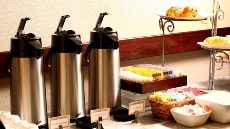
Research shows that taking break from work can enhance employee productivity. When you are working on a complex problem for number of hours just moving away from your desk and into the field can spur creativity and bring new ideas. That is why companies like Google and others have built offices that encourage employees to move away from their desk and “play” for a little while to take their mind away.
However, what happens when your employees take advantage of this and take too many breaks that hurt their productivity and your finances. There are some common breaks that employees take all the time without giving any thought on their impact on the bottom line. The folks at Inn Supplies that provide Paper cup and disposable catering equipment have broken down the cost of such breaks in an interesting manner.
The regulations
Before we begin talking budgets, let’s discuss how many breaks your employees are entitled to. If your employees work for longer than six hours in a day, they are entitled to an uninterrupted break of 20 minutes. In addition, workers who smoke are entitled to cigarette breaks.
Young workers between the age of 16 and 18 are entitled to a 30-minute rest break if they work longer than 4.5 hours.
As an employer, you only have to offer paid rest breaks if it is stipulated within your employees’ contracts.
The reality
Of course, the typical working day usually includes more breaks than those outlined by the government. For example, tea and toilet breaks will all take your staff away from their responsibilities — but just how much does it cost you? We break it down:
Tea breaks
Britain is a nation of tea lovers. At work, we spend approximately 24 minutes each day brewing up—that’s 188 days and 21 hours over the course of an individual’s working life. In terms of lost time, this equates to around £400 per employee per year, assuming an average wage of £26,000. However, those on higher wages will cost your business more every time they make a cuppa.
This only considers lost time though — many employers also foot the bill for the tea, coffee, milk and sugar, costing them even more over the course of the year. Of course, this cost varies by a number of factors, including location and company size.
Research by Epiphany has found that there’s a whopping 21p difference between making a brew in London (the most expensive at 69p) and brewing up in Hull (the cheapest at 48p).
Almost 50% of workers drink four or more cups a day, while 33% drink between one and three and just 20% don’t drink any. Using the above costs and percentages, a business in Hull with 50 employees can expect to fork out £64.32 a day on tea and coffee supplies.* In London, this figure is even higher at £92.46 per day.
Smoking breaks
How much impact do smokers have on your business costs? According to research for the British Heart Foundation, each full-time member of staff who smokes at work cost their employer £1,815 a year.
Considering one in five British workers smoke, a 50-strong business could have around 10 smokers — costing £18,150 in lost time annually.
However, it’s not just their cigarette breaks that you’re forking-out for; smokers also take more sick leave than non-smokers. Although it works out at just 70% of an extra day’s sick leave each year, it adds roughly another £50 per smoker per year to your expenses.
Toilet breaks
Going to the loo is natural. Most people will visit the toilet between six and seven times a day. If we assume that three of these visits occur at work, each lasting four minutes each, an employee with an annual salary of £26,500 will cost you 92p per toilet trip according to the calculator developed by Plumbworld. Over the course of the year, this works out at £662.50 — for just one employee!**
Of course, this figure doesn’t consider the cost of toilet roll, soap and other bathroom essentials and maintenance. Add in these items and the cost rockets even further.
Related posts:






